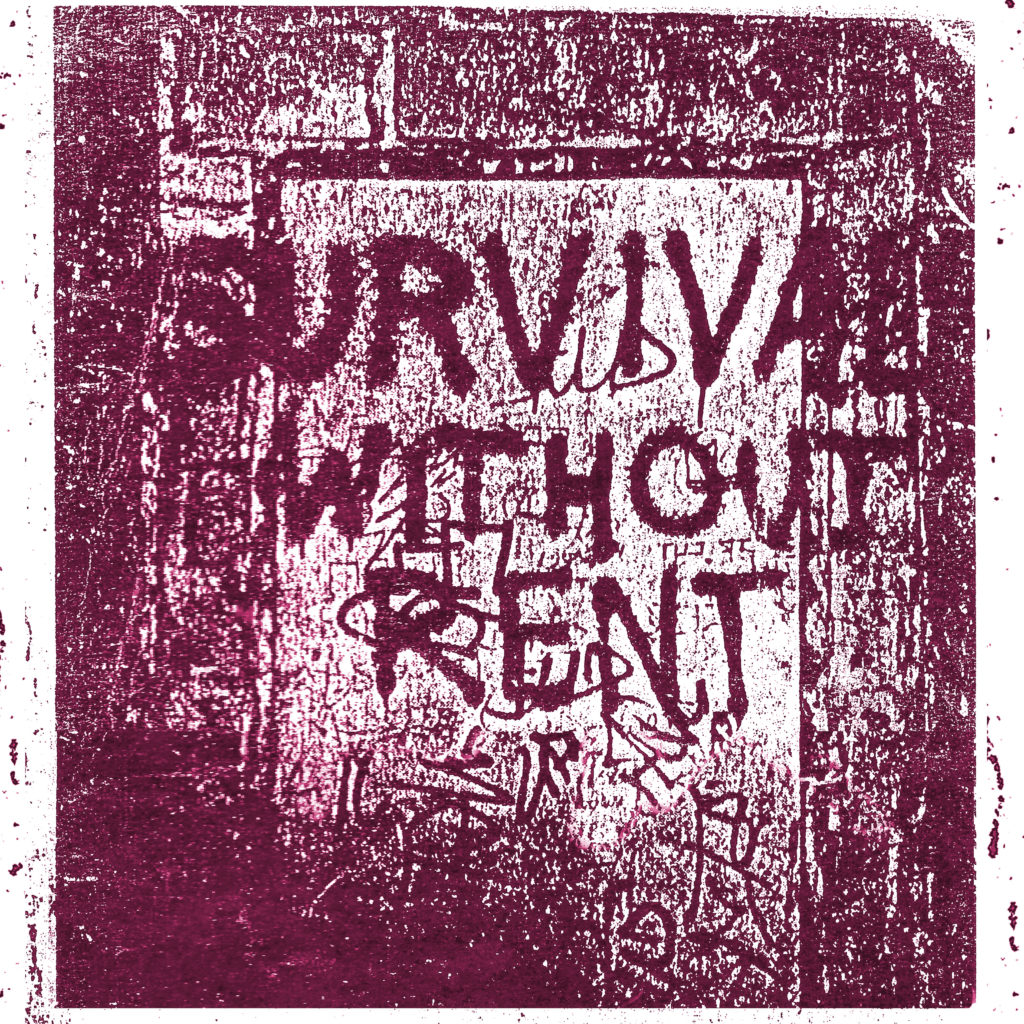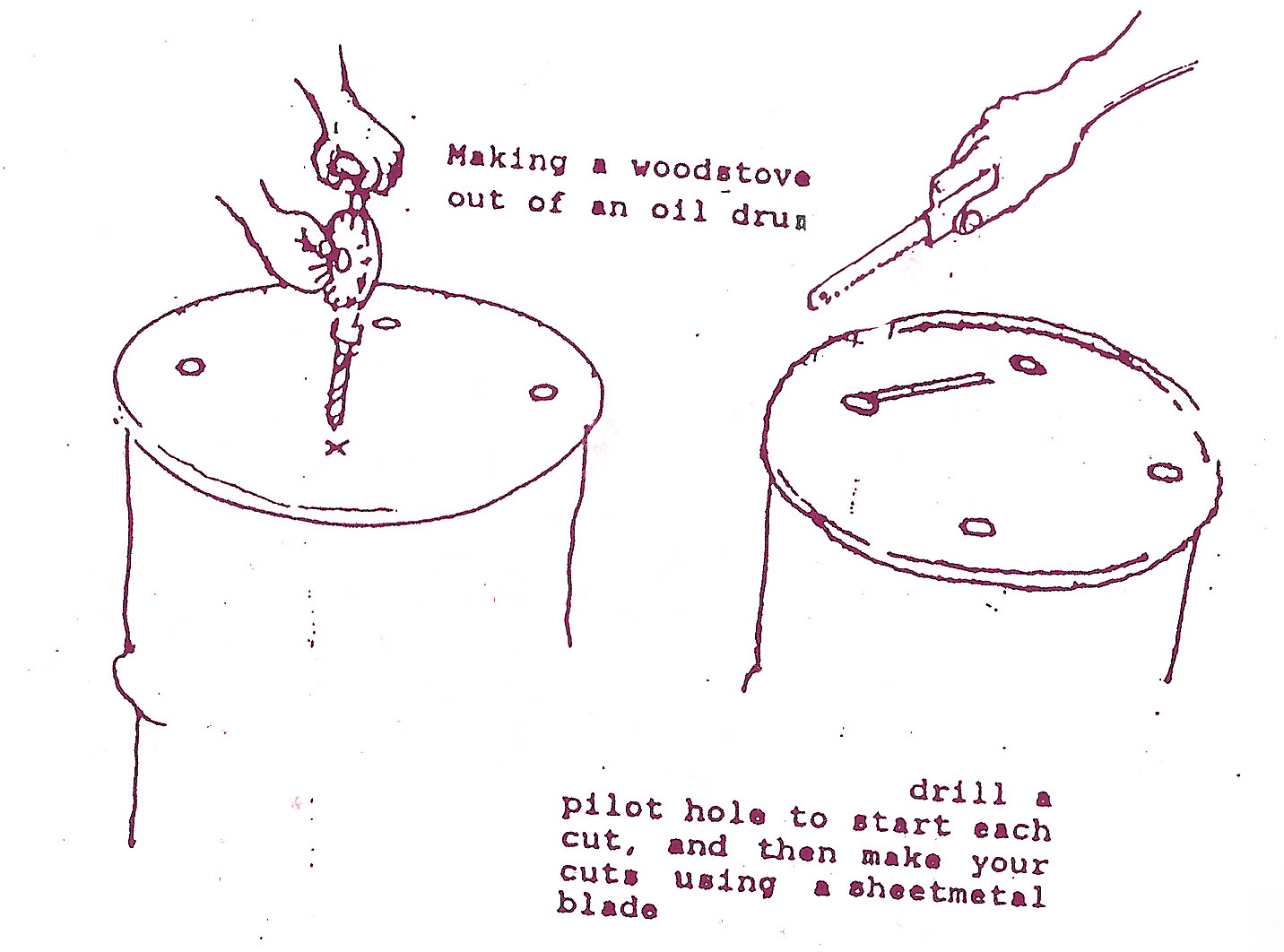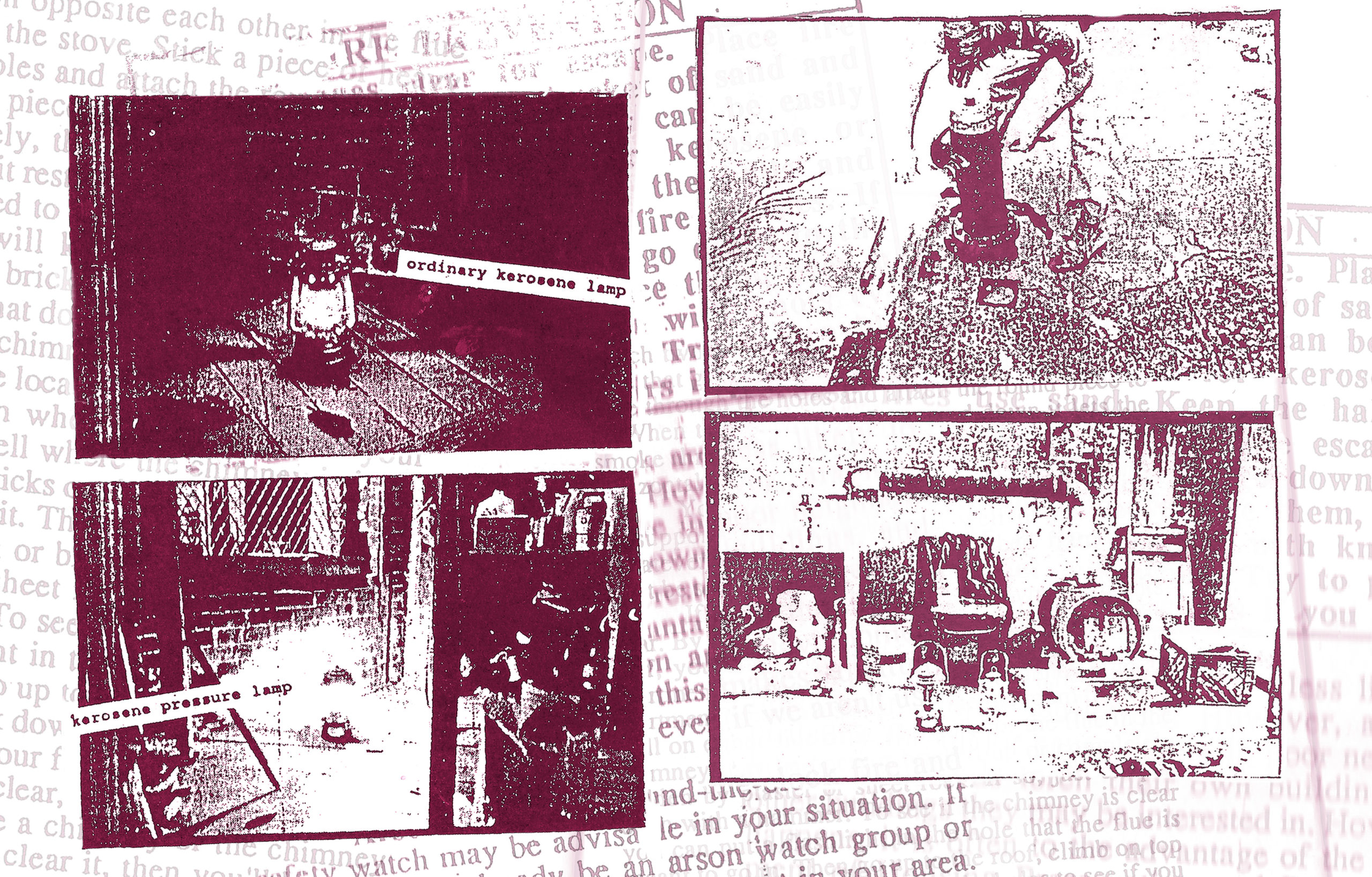 Survival Without Rent is a legendary zine with all the tips you need for squatting in New York City or elsewhere. It’s full of practical tips for squatters and others getting by in increasingly hostile cities, and we turned to it to include in How to Win at Winter, our DIY guide to kicking ass even in the dark depths of the bleakest season For those of you living the anarchist dream 12 months a year, read on to learn how to stay warm with your very own DIY wood stove! Our copy of the zine looks like it’s been copy scammed about a hundred times, so we’ve re-set the text excerpted below and abridged it for clarity.
Survival Without Rent is a legendary zine with all the tips you need for squatting in New York City or elsewhere. It’s full of practical tips for squatters and others getting by in increasingly hostile cities, and we turned to it to include in How to Win at Winter, our DIY guide to kicking ass even in the dark depths of the bleakest season For those of you living the anarchist dream 12 months a year, read on to learn how to stay warm with your very own DIY wood stove! Our copy of the zine looks like it’s been copy scammed about a hundred times, so we’ve re-set the text excerpted below and abridged it for clarity.
In New York City, heating is not merely a creature comfort in the winter. Tenants have a right to heat, and headlines of people freezing to death on the streets are routine. Though kerosene heaters can be messy, and hazardous if not watched, they are a practical and economical means of heating. Never store your kerosene in the same room as the heaters themselves, and never go to sleep with the heater on.
Get a wood stove if you can, it can be a very cheap source of heat. Wood stoves are also safer and healthier than kerosene. If you can’t find one, you can make one from a discarded steel drum.
Make two holes in the drum, one to put the wood in, where you’ll add a door to keep smoke from backing out; and another for the smoke to escape through a flue pipe —you’ll make that too. The easiest way to cut holes is to drill a pilot hole to start each cut, and then use a jig saw with a sheet-metal blade for the rest. If power tools aren’t available, you could even cut the holes using a cold chisel.
The swinging door should attach with hinges along the bottom of the opening and also be lockable. Measure the hole for the flue to fit the flue pipe, about 5” diameter.
Make a damper, which allows you to control how fast and high the fire burns without using the door. Make one by cutting a round piece of sheet metal slightly less than the diameter of the flue. Punch a hole entering one side of the flue pipe and continuing through the other side. Stick a piece of heavy wire through the first hole, thread it through the round piece to and then out through the second hole. When the inside metal circle is in the up-and-down position it allows smoke through and stokes the fire; the more you close it, the more it restricts the flow of smoke and the pace of the blaze.
You must set the stove on some kind of support to keep it well above floor level. You can use anything you can find — bricks, old bed frames — as long as it won’t burn or char.
It is important that the smoke runs out of a proper flue or chimney, both for safety and to avoid complaints. If your building has a chimney, make sure it is clear of obstructions. To check, put a flashlight in one of the flue holes, take yourself up to the roof and look down to see if it shines through.The hole for the flue in the chimney may be bricked up or otherwise blocked. If so, just chop it open with a hammer. If you don’t have a chimney or its too blocked, just chop a flue hole in the wall or run the flue pipe out a window. In either case, the flue pipe should go all the way up and past the roof by five feet.
Fire extinguishers and smoke alarms are needed for your safety, and in case any city officials manage to get inside your building.
Never burn painted, shellacked or treated wood in your stoves: they give off poisonous fumes and gases. Keep your place well ventilated no matter and never leave a fire or heater unattended.
Keep passages, halls, stairs and fire escapes clear, keep fire extinguishers or buckets of sand or water nearby and on every floor.
A round-the-clock fire and safety watch may be advisable for your situation. Connect with cool neighbours or other squatters in the area to share the workload. They may already have something like this going.
Text and excerpt images have adapted from the zine Survival Without Rent.
